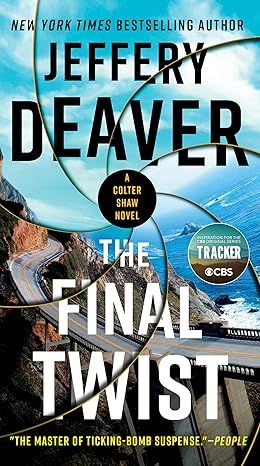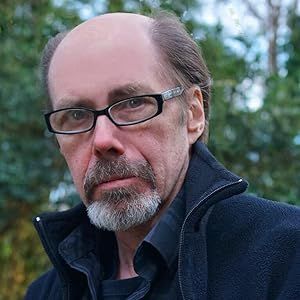The Final Twist (A Colter Shaw Novel)
4.5
-
8,168 ratings
THE INSPIRATION FOR THE CBS ORIGINAL SERIES TRACKER
“The master of ticking-bomb suspense” (People) returns with a devilishly good thriller, and reward seeker Colter Shaw's most personal case to date.
Just hours after the harrowing events of The Never Game and The Goodbye Man, Colter Shaw finds himself in San Francisco, where he has taken on the mission his father began years ago: finding a missing courier bag containing evidence that will bring down a corporate espionage firm responsible for hundreds, perhaps thousands, of deaths.
Following the enigmatic clues his father left behind, Shaw plays cat and mouse with the company's sadistic enforcers, as he speeds from one gritty neighborhood in the City by the Bay to another. Suddenly, the job takes on a frightening urgency: Only by finding the courier bag can he expose the company and stop the murder of an entire family—slated to die in forty-eight hours.
With the help of an unexpected figure from his past, and with the enforcers closing the net, Shaw narrows in on the truth—and learns that the courier bag contains something unexpected: a secret that could only be described as catastrophic.
Filled with dozens of twists and reversals, The Final Twist is a nonstop race against time to save the family...and to keep the devastating secret Shaw has uncovered from falling into the wrong hands.
Kindle
$7.99
Available instantly
Audiobook
$0.00
with membership trial
Hardcover
$1.97
Paperback
$9.89
Ships from
Amazon.com
Payment
Secure transaction
ISBN-10
052553914X
ISBN-13
978-0525539148
Print length
528 pages
Language
English
Publisher
G.P. Putnam's Sons
Publication date
March 28, 2022
Dimensions
4.12 x 1.13 x 7.5 inches
Item weight
2.31 pounds
Product details
ASIN :
B08KPHT6KV
File size :
5260 KB
Text-to-speech :
Enabled
Screen reader :
Supported
Enhanced typesetting :
Enabled
X-Ray :
Enabled
Word wise :
Enabled
Editorial Reviews
“Jeffery Deaver’s action-packed ‘The Final Twist’ a nail-biter… [it] begs for another visit with Colter.”--South Florida Sun-Sentinel
“Jeffery Deaver’s The Final Twist lives up to its name admirably, even delivering said twist on the very last page of the book.” –BookPage (Starred Review)
“…[The Final Twist] is clearly the best of the series so far.” –Booklist
Sample
1
The safe house.
At last.
Colter Shaw’s journey to this cornflower-blue Victorian on scruffy Alvarez Street in the Mission District of San Francisco had taken him weeks. From Silicon Valley to the Sierra Nevadas in eastern California to Washington State. Or, as he sat on his Yamaha motorcycle, looking up at the structure, he reflected: in a way, it had taken him most of his life.
As often is the case when one arrives at a long-anticipated destination, the structure seemed modest, ordinary, unimposing. Though if it contained what Shaw hoped, it would prove to be just the opposite: a mine of information that could save hundreds, perhaps thousands, of lives.
But as the son of a survivalist, Shaw had a preliminary question: Just how safe a safe house was it?
From this angle, it appeared deserted, dark. He dropped the transmission in gear and drove to the alley that ran behind the house, where he paused again, in front of an overgrown garden, encircled by a gothic wrought-iron fence. From here, still no lights, no signs of habitation, no motion. He gunned the engine and returned to the front. He skidded to a stop and low-gear muscled the bike onto the sidewalk.
He snagged his heavy backpack, chained up the bike and helmet, then pushed through the three-foot-deep planting bed that bordered the front. Behind a boxwood he found the circuit breakers for the main line. If there were an unlikely bomb inside it would probably be hardwired; whether it was phones or computers or improvised explosive devices, it was always tricky to depend on batteries.
Using the keys he’d been bequeathed, he unlocked and pushed open the door, hand near his weapon. He was greeted only with white noise and the scent of lavender air freshener.
Before he searched for the documents he hoped his father had left, he needed to clear the place.
No evidence of threat isn’t synonymous with no threat.
He scanned the ground floor. Beyond the living room was a parlor, from which a stairway led upstairs. Past that room was a dining room and, in the back, a kitchen, whose door, reinforced and windowless, led onto the alleyway. Another door in the kitchen led to the cellar, an unusual feature in much of California. The few pieces of furniture were functional and mismatched. The walls were the color of old bone, curtains sun-bleached to inadvertent tie-dye patterns.
He took his time examining every room on this floor and on the second and third stories. No sign of current residents, but he did find bed linens neatly folded on a mattress on the second floor.
Last, the basement.
He clicked on his tactical halogen flashlight, with its piercing beam, and descended to see that the room was largely empty. A few old cans of paint, a broken table. At the far end was a coal bin, in which a small pile of glistening black lumps sat. Shaw smiled to himself.
Ever the survivalist, weren’t you, Ashton?
As he stared into the murk, he noted three wires dangling from the rafters. One, near the stairs, ended in a fixture and a small bulb. The wires in the middle and far end had been cut and the ends were wrapped with electrician’s tape.
Shaw knew why the two had been operated on: to keep someone from getting a good view of the end of the cellar.
Shining the beam over the back wall, he stepped close.
Got it, Ash.
As with the rest of the basement, this wall was constructed of four-by-eight plywood sheets nailed to studs, floor to ceiling, painted flat black. But an examination of the seams of one panel revealed a difference. It was a hidden door, opening onto a secure room. He took the locking-blade knife from his pocket and flicked it open. After scanning the surface a moment longer, he located a slit near the bottom. He pushed the blade inside and heard a click. The door sprung outward an inch. Replacing the knife and drawing his gun, he crouched, shining the beam inside, holding the flashlight high and to the left to draw fire, if an enemy were present and armed.
He reached inside and felt for tripwires. None.
He slowly drew the door toward him with his foot.
It had moved no more than eighteen inches when the bomb exploded with a searing flash and a stunning roar and a piece of shrapnel took him in the chest.
2
The risk in detonations is usually not death.
Most victims of an IED are blinded, deafened and/or mutilated. Modern bomb materials move at more than thirty thousand feet per second; the shock wave could travel from sea level to the top of Mount Everest in the time it takes to clear your throat.
Shaw lay on the floor, unable to see, unable to hear, coughing, in pain. He touched the spot where the shrapnel had slammed into him. Sore. But no broken-skin wound. For some reason the skin hadn’t broken. He did a fast inventory of the rest of his body. His arms, hands and legs still functioned.
Now: find his weapon. A bomb is often a prelude to an attack.
He could see nothing but, on his knees, he patted the damp concrete in a circular pattern until he located the gun.
Squinting, but still seeing nothing. You can’t will your vision to work.
No time for panic, no time for thinking of the consequences to his lifestyle if he’d been permanently blinded or deafened. Rock climbing, motorbiking, traveling the country—all endangered, but not something to worry about right now.
But how could he tell where the assault was coming from? In a crouch he moved to where he thought the coal bin was. It would at least provide some cover. He tried to listen but all he could hear was a tinnitus-like ringing in his ears.
After five desperate minutes he was aware of a faint glow coalescing at the far end of the cellar. Light from the kitchen above.
So his vision wasn’t gone completely. He’d been temporarily blinded by the brilliance of the explosion. Finally he could make out the beam of his tac light. It was ten feet away. He collected it and shone the bright light throughout the basement and into the room on the other side of the hidden door.
No attackers.
He holstered his weapon and snapped his fingers beside each ear. His hearing was returning too.
Then he assessed.
What had just happened?
If the bomber had wanted an intruder dead, that could’ve easily been arranged. Shaw shone his light on the frame of the hidden door and found the smoking device, gray metal. It was a large flash-bang—designed with combustible materials that, when detonated, emitted blinding light and a stunning sound but didn’t fling deadly projectiles; its purpose was to serve as a warning.
He looked carefully to see why he’d missed it. Well, interesting. The device was a projectile. It had been launched from a shelf near the hidden door, rigged to explode after a half second or so. This is what had hit him in the chest. The trigger would be a motion or proximity detector. Shaw had never heard of a mechanism like this.
He carefully scanned the room for more traps. He found none.
Who had set it? His father and his colleagues had likely made the secret room, but they probably would not have left the grenade. Ashton Shaw never worked with explosives. Possessing them without a license was illegal, and, for all his father’s serious devotion to survivalism and distrust of authority, he didn’t break the law.
Never give the authorities that kind of control over you.
Then Shaw confirmed his father could not have created the trap. When he examined the device more closely under the searing white beam, he noted that it was military-issue and bore a date stamp of last year.
Shaw flicked on an overhead light and tucked his flashlight away. He saw a battered utility table in the center of the twenty-by-twenty space, an old wooden chair, shelves that were largely bare but held some papers and clothes. Other stacks of documents sat against the wall. A large olive-drab duffel bag was in the corner.
On the table were scores of papers.
Was this it? The hidden treasure that others—his father among them—had died for?
He walked around the table, so he was facing the doorway to the secret room, and bent forward to find out.
3
Colter Shaw was here because of a discovery he’d made on his family’s Compound in the soaring peaks of eastern California.
There, on high and austere Echo Ridge, where his father had died, Shaw had found a letter the man had written and hidden years ago.
A letter that would change Shaw’s life.
Ashton began the missive by saying that over his years as a professor and amateur historian and political scientist, he’d come to distrust the power of large corporations, institutions, politicians and wealthy individuals “who thrive in the netherworld between legality and illegality, democracy and dictatorship.” He formed a circle of friends and fellow professors to take on and expose their corruption.
The company that they first set their sights on was BlackBridge Corporate Solutions, a firm known for its work in the shadowy field of corporate espionage. The outfit was behind many questionable practices, but the one that Ashton and his colleagues found the most reprehensible was their “Urban Improvement Plan,” or “UIP.” On the surface it appeared to help developers locate real estate. But BlackBridge took the brokerage role one step further. Working with local gangs, BlackBridge operatives flooded targeted neighborhoods with free and cheap opioids, fentanyl and meth. Addiction soared. As the neighborhoods became unlivable, developers swooped in to buy them up for next to nothing.
This same tactic won results for political clients: PACs, lobbyists and candidates themselves. The infestation of illegal drugs would cause a shift in population as residents moved out, affecting congressional districting. The UIP was, in effect, gerrymandering by narcotics.
BlackBridge’s schemes became personal for Ashton Shaw when a friend and former student of his—then a San Francisco city councilman—began looking into the UIP operation. Todd Zaleski and his wife were found murdered, a close-range gunshot for each of them. It appeared to be a robbery gone bad, but Ashton knew better.
He and his colleagues looked for evidence against the company, hoping to build a case for authorities. Nearly all BlackBridge workers refused to talk to them but he managed to learn of an employee who felt the UIP had crossed a line. A researcher for BlackBridge, Amos Gahl, found some evidence and smuggled it out of the company. The man hid what he’d stolen somewhere in the San Francisco area. But before he could contact Ashton or the authorities, he too was dead—the victim of a suspicious car crash.
Ashton had written in his letter: It became my obsession to find what Gahl had hidden.
Then BlackBridge learned of Ashton and those who shared his obsession. Several died in mysterious accidents, and the others dropped out of the mission, fearful for their lives. Soon, Ashton was alone in his quest to bring down the company that had killed his student and so many others in the City by the Bay—and, likely, untold other cities.
Then on a cold October night, Colter Shaw, sixteen years old, discovered his father’s body in desolate Echo Ridge.
Since then, he’d become well aware of the shady figures he was up against:
Ian Helms, founder and CEO of BlackBridge. Now in his mid-fifties and movie-star handsome, he had had some national defense or intelligence jobs in the past and had worked in politics and lobbying.
Ebbitt Droon, a “facilitator” for the company, which is to say a hitman, was wiry with rat-like features. After several personal run-ins with the man, including one that featured a Molotov cocktail hurled in Shaw’s direction, he was sure that Droon was a certifiable sadist.
Irena Braxton, BlackBridge operative in charge of stopping Ashton—and now stopping his son. Of her Ashton had written:
She may look like somebody’s grandmother but oh, my, no. She’s the picture of ruthlessness and will do what needs to be done.
She was an external relations supervisor, a euphemistic job description if ever there was one.
Ashton had concluded his letter with this:
Now, we get around to you.
You’ve clearly followed the breadcrumbs I’ve left leading you to Echo Ridge and now know the whole story.
I can hardly in good conscience ask you to take on this perilous job. No reasonable person would. But if you are so inclined, I will say that in picking up where my search has ended, you’ll be fighting to secure justice for those who have perished or had their lives upended by BlackBridge and its clients, and you’ll be guaranteeing that thousands in the future will not suffer similar fates.
The map included here indicates the locations in the city that might contain—or lead to—the evidence Gahl hid. After leaving this letter and accompanying documents, I will be returning to San Francisco and I hope I will have found more leads. They can be found at 618 Alvarez Street in San Francisco.
Finally, let me say this:
Never assume you’re safe.
A.S.
Read more
About the authors
Jeffery Deaver
Jeffery Deaver is an international number-one bestselling author. His novels have appeared on bestseller lists around the world. His books are sold in 150 countries and translated into over twenty-five languages. He has served two terms as president of Mystery Writers of America, and was recently named a Grand Master of MWA, whose ranks include Agatha Christie, Ellery Queen, Mary Higgins Clark and Walter Mosely.
The author of over forty novels, three collections of short stories and a nonfiction law book, and a lyricist of a country-western album, he’s received or been shortlisted for dozens of awards. His "The Bodies Left Behind" was named Novel of the Year by the International Thriller Writers association, and his Lincoln Rhyme thriller "The Broken Window" and a stand-alone, "Edge," were also nominated for that prize. "The Garden of Beasts" won the Steel Dagger from the Crime Writers Association in England. He’s also been nominated for eight Edgar Awards by the MWA.
Deaver has been honored with the Lifetime Achievement Award by the Bouchercon World Mystery Convention, the Strand Magazine’s Lifetime Achievement Award and the Raymond Chandler Lifetime Achievement Award in Italy.
His book "A Maiden’s Grave" was made into an HBO movie starring James Garner and Marlee Matlin, and his novel "The Bone Collector" was a feature release from Universal Pictures, starring Denzel Washington and Angelina Jolie. Lifetime aired an adaptation of his "The Devil’s Teardrop." NBC television recently aired the nine-episode prime-time series, "Lincoln Rhyme: Hunt for the Bone Collector."
You can find out more about Jeffery on his website www.jefferydeaver.com, Facebook page facebook.com/JefferyDeaver, and follow him on Twitter @JefferyDeaver.
Read more
Reviews
Customer reviews
4.5 out of 5
8,168 global ratings
John Emrich
5
Great read! Loved it!
Reviewed in the United States on February 3, 2024
Verified Purchase
Great read
Eager Reader
5
Colter Shaw faces his most formidable opponent
Reviewed in the United States on June 16, 2024
Verified Purchase
Although beginning with Colter Shaw’s usual mission of taking on a search for a missing person to earn a reward, most of this outing involves Shaw pursuing BlackBridge, a “dirty tricks” outfit, the employees of that outfit, and those who employed BlackBridge for their own corrupt purposes. Shaw’s motive for choosing this target couldn’t be more personal: it was a BlackBridge operative who had murdered Shaw’s father, Ash, years ago. Following decades-old leads, Shaw locates the super-rich British oligarch now residing in the SF Bay Area, Devereaux, at whose request Ash had been targeted. Shaw tries to uncover what reason Devereaux had for targeting Ash. Shaw is aided by unexpected allies and faces continual threats and attacks from his powerful opponents. The story is complex but compelling and kept this reader up late, unable to put the book down. Highly recommended.
Read more
Richard B. Schwartz
5
Completing the trilogy (or will there be more?)
Reviewed in the United States on May 17, 2021
Verified Purchase
Given the title, this is likely to be the final volume in the Colter Shaw trilogy. Whether or not Colter will return again is an open question. There is a little bit of light coming through the door at the denouement, so it is possible. Moreover, JD introduces a new and potentially pivotal character in THE FINAL TWIST—Colter’s older brother, Russell. Russell works for a deep-ops governmental organization, probably DOD, and he has associates, techniques, moves and abilities that complement Colter’s.
I won’t summarize the plot, but simply remind readers that Colter is on a quest to complete a mission of his late father’s—to uncover the doings of a very, very dirty firm that does malevolent things for rich and even more malevolent people. Colter’s father had been in search of a cache of documents that would complete the investigation, insure the indictments and sink the baddies. The documents were hidden somewhere in San Francisco, where the vast majority of the story takes place. The city plays a central role in the story and JD depicts it with great skill. The jacket art is an image of route 1, along which the denouement occurs (in Half Moon Bay). I have driven that stretch in heavy rain in a very imperfect rental car and it brought back a number of haunting memories.
In sum: there are basically two intersecting plots with a subplot (involving an abducted woman), which is pulled into the main story. Colter and Russell are all over SanFran, observing bad guys, dodging bad guys, investigating bad guys, hanging out in safe houses, doing their father’s implied bidding. There are many twists and turns and (for first-time readers of JD) big, unanticipated surprises. As a reader of all of JD’s novels, I expected the twists and anticipated most of them.
This is A-list material, what I call a ‘carry around’ book, one which you always have at your side and can read whenever a break in the day presents itself, a book like THE SILENCE OF THE LAMBS or Andrew Vachss’s FLOOD. It is not, however, JD’s best book. Five stars, of course, but for JD, perhaps 4.8. The reason is that the book’s plot feels just slightly off, as if the book was revised a few too many times or one in which the author was trying to correct things he wasn’t quite comfortable with, drew on his impressive chops, but left a few kinks along the way. In other words, the story didn’t feel completely planned; there is the sense that some things were made up on the fly. This may be entirely wrong (and quite unfair) and it may just be a writer’s view rather than a reviewer’s, but there it is; I won’t dissemble. There is a new Lincoln Rhyme novel coming in November, which I anxiously anticipate.
Read more
6 people found this helpful
Amazon Customer
5
And then there were two.
Reviewed in the United States on June 13, 2024
Verified Purchase
Could not put it down, new adventures at every page turn. Need more from this story. Colt is a good character.
Placeholder
5
Deaver has a way...
Reviewed in the United States on June 11, 2024
Verified Purchase
Of pulling you in immediately thought action a d his characters. I rellychop we see a los more of Colter!
Top Jeffery Deaver titles

The Steel Kiss: Lincoln Rhyme Book 12 (Lincoln Rhyme Thrillers)
4.3
-
15,078
$2.55

The Coffin Dancer: A Novel (2) (Lincoln Rhyme Novel)
4.5
-
5,617
$1.31
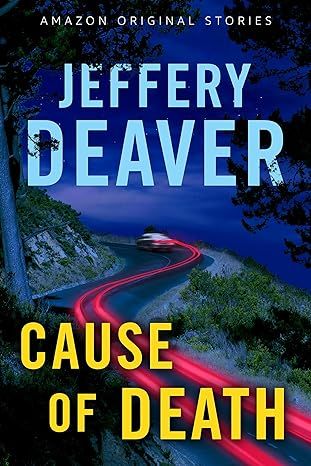
Cause of Death
4.2
-
5,166
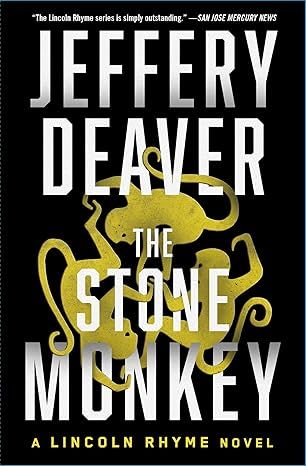
The Stone Monkey: A Lincoln Rhyme Novel (4)
4.5
-
4,802
$1.24
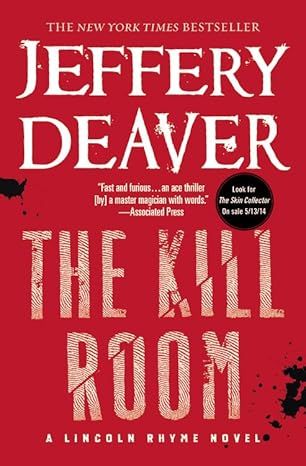
The Kill Room (Lincoln Rhyme)
4.3
-
6,193
$5.29

The Burial Hour (A Lincoln Rhyme Novel, 14)
4.2
-
12,268
$9.99
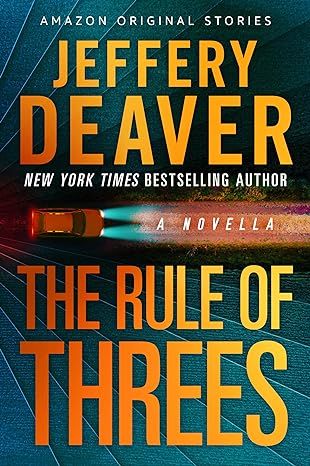
The Rule of Threes: A Novella
4
-
10,459
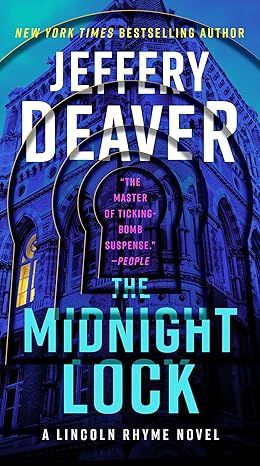
The Midnight Lock (Lincoln Rhyme Novel)
4.5
-
10,344
$2.05

The Burning Wire (9) (Lincoln Rhyme Novel)
4.4
-
5,500
$3.99
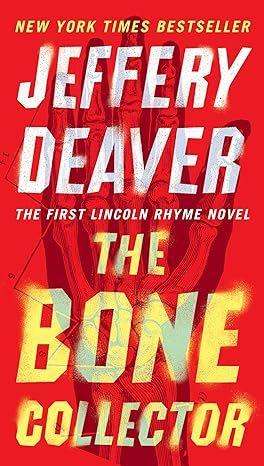
The Bone Collector (Lincoln Rhyme Novel)
4.5
-
7,183
$7.99
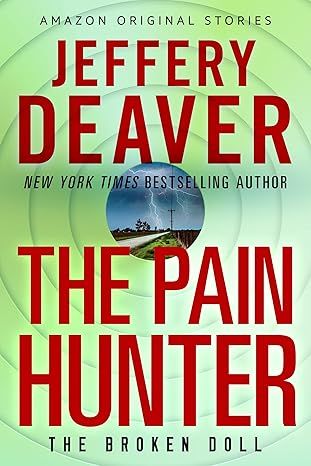
The Pain Hunter (The Broken Doll Book 1)
4.2
-
5,263

Shallow Graves
4
-
1,304
$3.82
Best Sellers
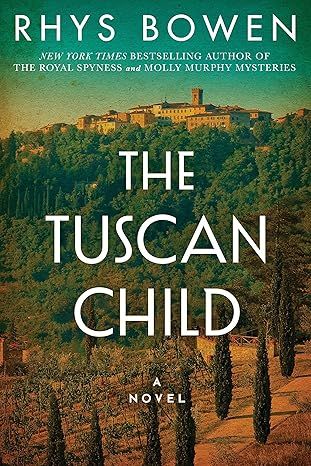
The Tuscan Child
4.2
-
100,022
$8.39
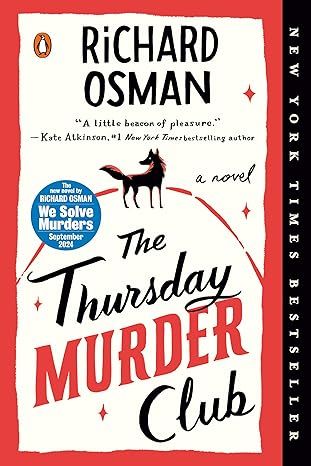
The Thursday Murder Club: A Novel (A Thursday Murder Club Mystery)
4.3
-
155,575
$6.33
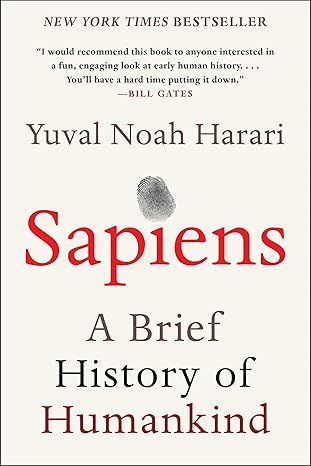
Sapiens: A Brief History of Humankind
4.6
-
140,302
$13.49
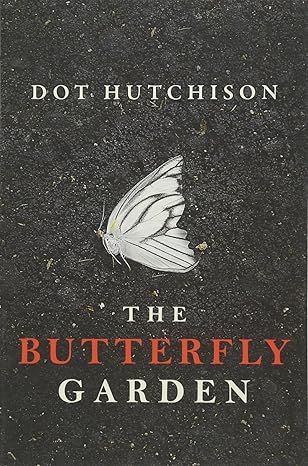
The Butterfly Garden (The Collector, 1)
4.3
-
88,556
$9.59

Things We Hide from the Light (Knockemout Series, 2)
4.4
-
94,890
$11.66
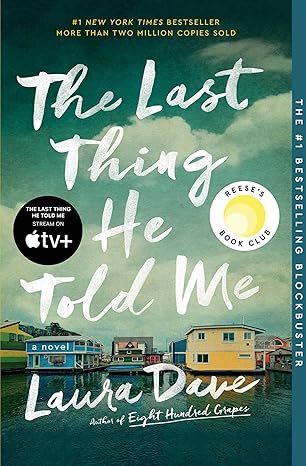
The Last Thing He Told Me: A Novel
4.3
-
154,085
$2.99

The Perfect Marriage: A Completely Gripping Psychological Suspense
4.3
-
143,196
$9.47
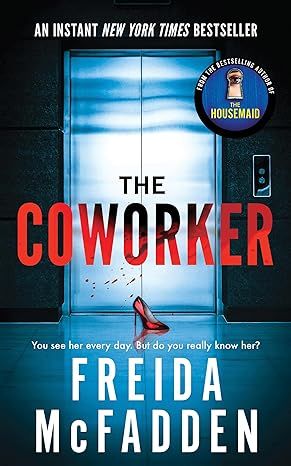
The Coworker
4.1
-
80,003
$13.48

First Lie Wins: A Novel (Random House Large Print)
4.3
-
54,062
$14.99
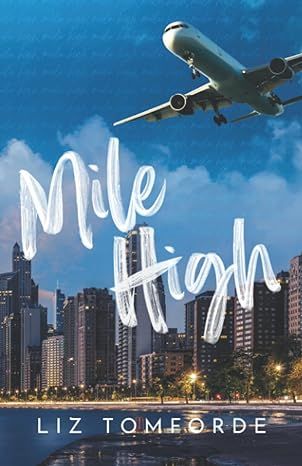
Mile High (Windy City Series Book 1)
4.4
-
59,745
$16.19

Layla
4.2
-
107,613
$8.99
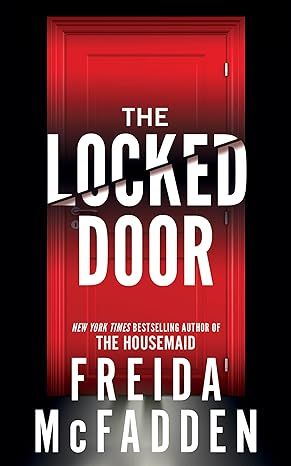
The Locked Door
4.4
-
94,673
$8.53
